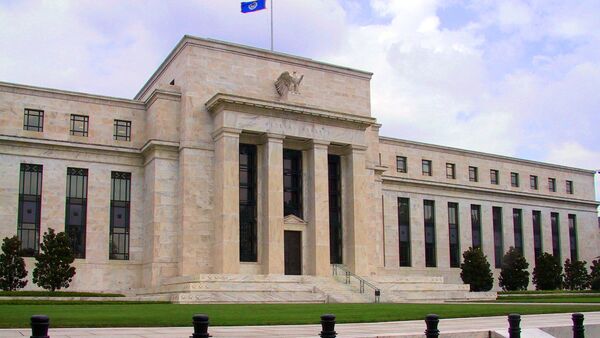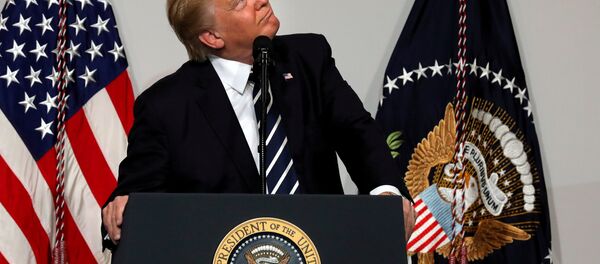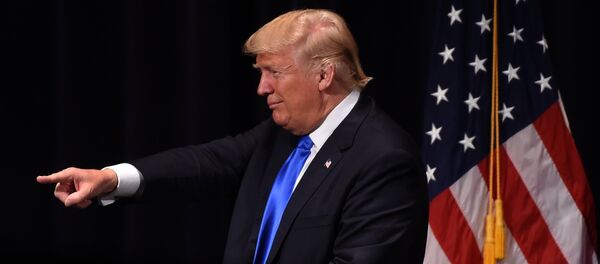The Dodd-Frank replacement, the Financial Choice Act, eliminates the prohibitively high reserve requirements that had hampered small bank lending for years, but in order for the positive effect of financial sector deregulation to pass on to the Main Street economy, higher base borrowing costs are required for the Federal Reserve, along with appropriate fiscal stimulus from the White House.
Unless Washington intensifies its effort to deliver a quicker pace of monetary tightening and a sooner fiscal stimulus package, the increase in regional bank lending will only be limited in the near-term, as lending profitability is still dismal low.
The Dodd-Frank Wall Street Reform and Consumer Protection Act was passed in 2010 and implemented soon thereafter, and the Obama administration championed it as increasing safety and stability in the US financial sector. Lower financial sector volatility in the post-Great Recession period, however, came at a price of lower lending activity, mainly, in the small lender segment, whilst the near-zero Fed borrowing costs in 2009-2015 had benefitted the largest US banks who could easily afford the higher reserve requirements without limiting their credit issuance capacity.
“This legislation comes to the rescue of Main Street America,” House Speaker Paul Ryan said Wednesday. “The Financial Choice Act makes it possible for small businesses across this country to stop struggling and to start hiring.”
The expected increase in regional and community bank lending after the replacement of Dodd-Frank is poised to increase investment activity outside the major US metropolitan areas. Higher investment activity would produce more jobs, whilst consumer activity in rural America is also expected to accelerate. However, smaller capitalisation banks are still cautious about increasing their credit issuance.
The fiscal stimulus package and broader deregulation, promised by President Donald Trump, are crucial in ensuring the increase in regional and community bank lending.
"I would expect (smaller lenders) to continue to underperform as long as we don't get some of these policy decisions to move through," Stephen Scouten of investment bank Sandler O’Neill + Partners said.
The chances the fiscal stimulus will come into effect this year are decreasing, which has produced a negative effect to bank loan profitability. The discrepancy between the long-term and short-term commercial interest rates has narrowed, impairing bank credit issuance in general, and a rebound in lending activity will only come as a result of higher Fed interest rates and higher federal budget investment in infrastructure.
"Eventually, for the smaller banks to outperform, concerns about the overall economy need to dissipate. Better economic growth usually leads to better lending growth and in that environment the yield curve steepens as well," Brian Kleinhanzl of New York-based Keefe, Bruyette & Woods said.
The Financial Choice Act also provides greater freedom for financial sector operations by repealing the so-called Volcker Rule, which prevented federal-insured banks from making risky investments. The US banking sector is therefore becoming a more volatile environment, and many community banks, amidst the still slow economic growth, might now find themselves under self-imposed lending restrictions instead of the federal ones.
According to the Federal Reserve’s Senior Loan Officer Opinion Survey on Bank Lending Practices for April 2017, US banks are facing lower industrial and commercial demand for credit for the first time since 2010. At the same time, banks are tightening underwriting standards on all their credit products, including commercial and industrial (C&I) loans.
This is happening mainly because of the higher long-term interest rates, stemming from the Fed monetary policy tightening, but also due to the lingering uncertainty surrounding the near-term US economic growth.
“… some domestic banks reportedly tightened either standards or terms on C&I loans over the past three months, and a major net share of these banks cited as important reasons a less favorable or more uncertain economic outlook; reduced tolerance for risk; and increased concerns about the effects of legislative changes, supervisory actions, or changes in accounting standards,” the Fed reported.
The Federal Reserve increased their base borrowing costs to 0.75-1.00 percent in March, and two-three more hikes are expected this year, likely bringing the Fed rates to 1.50-1.75 percent by the year-end. The Trump administration’s fiscal stimulus, however, might not take effect till the second quarter of 2018, whilst earlier expectations placed the enactment of the fiscal package at 3Q17.
This means that, despite the Financial Choice Act will create generally more favourable conditions for small bank lending, the positive effects of financial sector deregulation will pass on to the real economy with a significant delay of up to one year.




